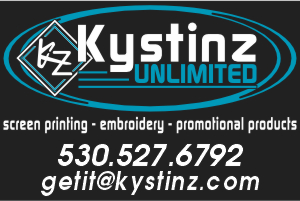Why Promotional Work and the ROI
Promotional products work because they blend psychology, utility, and visibility in a way most other marketing can’t. Here’s the breakdown:
1. Constant Visibility (Cost per Impression)
- Unlike ads that disappear after a click or view, promotional items stick around.
- A branded tote bag, water bottle, or charger can generate thousands of impressions over its lifetime.
- Industry studies show the cost per impression (CPI) of promo items is as low as $0.007—cheaper than digital, print, or TV ads.
2. Reciprocity Effect (Human Psychology)
- When someone receives a gift—even a small one—they feel a subtle obligation to reciprocate.
- This makes them more open to doing business with or remembering the brand that gave it to them.
- The brain interprets it as value given before asking for value back.
3. Utility = Longevity
- People keep what’s useful.
- Practical items like power banks, mugs, pens, or tote bags are used daily.
- More use = more brand exposure and longer message retention.
4. Brand Recall & Emotional Association
- 90% of people remember the company that gave them a promotional product—even after years.
- The item becomes a physical anchor for your brand in their environment.
- If the product feels high-quality or thoughtful, that positive impression extends to the company itself.
5. Mobile Advertising (Walking Billboards)
- Apparel, tote bags, hats, and drinkware aren’t just personal—they’re seen by others.
- That expands reach far beyond the original recipient at no additional cost.
6. Trust & Perceived Value
- Receiving a branded product feels more tangible and credible than a digital ad.
- It signals the company is established enough to invest in something physical.
- Premium items (like wireless chargers or insulated mugs) elevate a brand’s status perception.
7. Boosts Engagement in Campaigns
- Promo products increase response rates when paired with direct mail, email, or event marketing.
- For example: adding a branded item to a mailer can double response rates compared to coupons alone.
✅ In short: They work because they’re useful, visible, and tied to human psychology—turning your brand into a part of someone’s daily routine instead of a fleeting ad.
1. Top High-ROI Promotional Products
| Product TypeWhy It's EffectiveCost Insight | ||
| Reusable Water Bottles / Tote Bags | Sustainable, high-usage items that last—boost visibility and brand association | Medium; strong long-term impact |
| Branded Flashlights | Utility-focused and memorable; Thompson Plumbing turned a $1,200 spend into $15,400—1,283% ROI Grizzly Designs | Low cost per unit; huge ROI |
| Tech Accessories (e.g., Wireless Chargers, Power Banks) | Daily utility, modern appeal, high retention | Higher cost but high perceived value |
| Apparel (T-Shirts, Hoodies) | Walking billboards—T-shirts are #1 and hoodies rank high in desirability VistaPrint | Varies; can scale by quality tier |
| Eco-friendly Gifts & Desk Accessories | Align with brand values; desk usage boosts visibility and loyalty | Medium; valuable if well-branded |
| Novelty Functional Items (e.g., Carabiner Keychains, Coasters) | Everyday use, durable, memorable | Low–medium; high impression value |
2. Why These Deliver High ROI
Quality > Quantity
Investing in useful, high-quality, and relevant items engages recipients more deeply than cheap giveaways, driving higher retention and impression value ciloo.comState Graphics.
Measurable Impact with Tracking
Embed QR codes, unique URLs, or promo codes on products for tracking brand exposure, web traffic, lead generation, and sales. Then quantify impact:
(Revenue – Cost) ÷ Cost × 100 = ROI State Graphicsgeektechbranding.comInvestopedia.
Proven Stats
- Studies show 90% recall for promotional products vs. 27% for digital ads—a 333% advantage Grizzly Designs.
- Direct mail with a promo item sees 50% higher response rates and 66% lower cost per response IAEE.
- Recipients spend 27% more over eight months compared to those who only received a coupon IAEE.
- Promotional items have extremely low cost per impression (≈ $0.007), far cheaper than TV, print, or magazines IAEE.
Strategic Selection & Execution
Tailor each item to your audience and brand values. Thoughtful alignment makes items more likely to be kept and used VistaPrintState Graphics.
3. Real-World ROI Snapshot
Thompson Plumbing Case Study
- Spent $1,200 on branded flashlights.
- Generated $15,400 in revenue over eight months.
- Resulted in a staggering 1,283% ROI Grizzly Designs.
4. Measuring Your ROI: 5 Actions to Take
- Set clear goals—whether brand awareness, lead gen, sales, or retention State Graphicsgeektechbranding.com.
- Choose fitting items matching your audience’s lifestyle and your brand’s personality.
- Track performance using QR codes, dedicated landing pages, unique promo codes, and surveys State Graphicsgeektechbranding.com.
- Calculate ROI using cost vs. revenue—and include intangible gains like impressions and loyalty InvestopediaState Graphics.
- Refine your strategy based on results—find what sticks, and lean in on high-performing products
